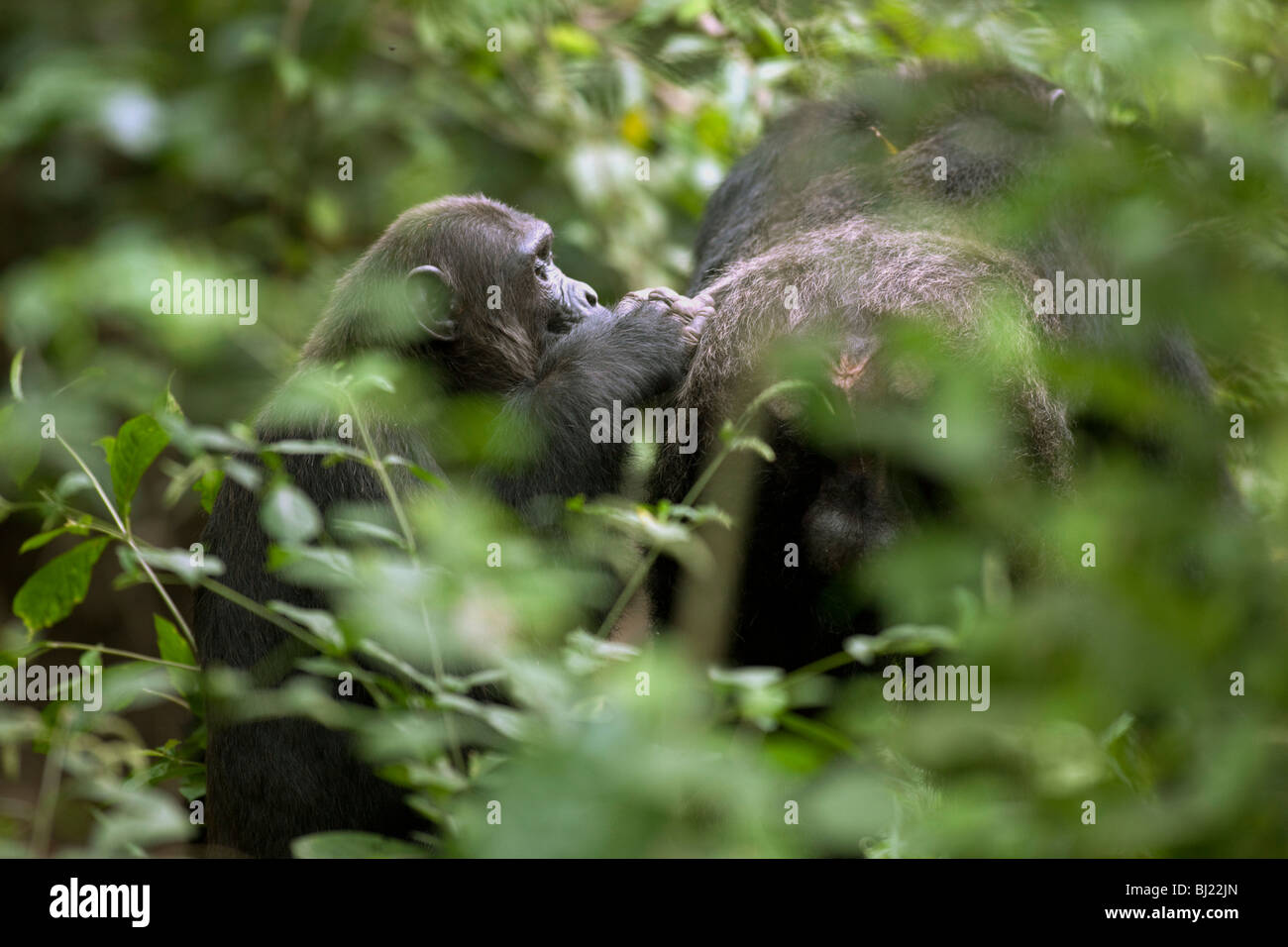"Hatari" grooming the old male, "Lumumba" in Kyambura Gorge

Image details
Contributor:
Duncan McKay / Alamy Stock PhotoImage ID:
BJ22JNFile size:
60.2 MB (1.7 MB Compressed download)Releases:
Model - no | Property - noDo I need a release?Dimensions:
5616 x 3744 px | 47.5 x 31.7 cm | 18.7 x 12.5 inches | 300dpiDate taken:
February 2010Location:
Kyambura Gorge, Queen Elizabeth National Park, Bushenyi District, Uganda, AfricaMore information:
"Hatari", young adult male, grooming "Lumumba", the ex alpha-male This group of 20 wild Chimps is completely isolated in Kyambura gorge, in the Great Rift Vally. It is cut off from other forest and chimpanzees due to the progress of humanity and the destruction of the forests for farm land and fuel. The troop now survives because it is in the Queen Elizabeth National Park and is largely protected by the Ugandan Wildlife Authority (UWA) although human conflict still exists and encroachment into the gorge is a slow but ever present drip, particularly into the Southern end. This troop is beautiful and peaceful but threatened by it's isolation which is already in the region of twenty years. In-breeding appears now into it's second generation and although no apparent birth defects are in evidence there is a disproportionate birth rate of males in comparison to females; a first sign of in-breeding observed in mountain gorillas. The UWA do not currently have any plans top save this troop although they do use them very successfully to bring in tourism and thus a large amount of foreign currency , which is used to protect other areas of the park. Two groups of tourists each day have the chance to visit them and share a breath taking experience with these wonderful characters. There is some discussion of building forest corridors, but nothing more than this, as it is widely believed impractical by all parties. Such corridors would be expensive, almost immediately under attack for fuel and take the best part of two generations to grow. Time that the Kyambura Chimps probably do not have. Other options are not under investigation as money is not available for such ventures. A shame when so much money is generated by them during the tourist visits.